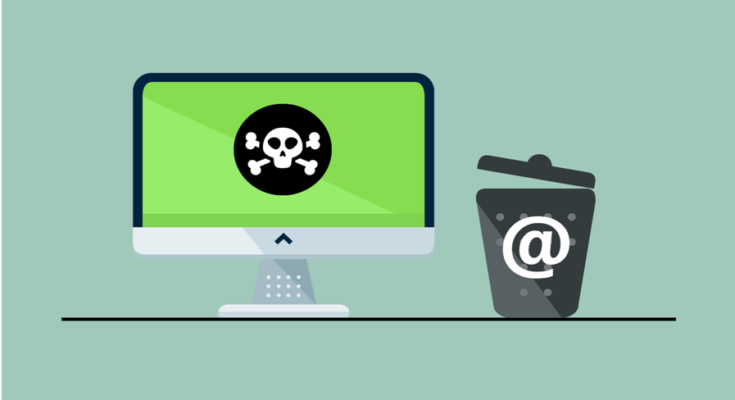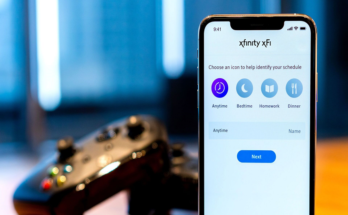Sometimes, the emails that a company sends to its clients can harm them, since they can be infected with viruses, which cause them to be sent or considered as SPAM. Join “SEO Communities” to get knowledge about harmful or spam emails.
But there are two types of filters that can prevent the sender from being considered spam. According to the Newsletter portal, it is indicated that between 80% of mass emails sent to customer emails are spam, despite the fact that these are carried out by good Email Marketing management.
Therefore, it is important to know some tips to achieve the success of your Email Marketing campaigns, and not be affected by spam. You can consult “SEO Company Dubai” to get tips about email marketing campaigns.
Therefore, in this article, you will be able to know which are the two filters that put a stop to a large amount of spam that can be in emails. But, first, we must know what spam is, and why it affects the sender. Visit “Digitalmarketing” to know more about spam and how it affects sender.
What is Spam?
“SPAM”. You have probably heard this word many times, but do not understand it’s meaning. It refers to all emails that were sent in bulk to various recipients without their consent, and that are considered by them as spam.
Therefore, a successful Email Marketing campaign by the (SEO Expert)can be affected by this problem, which affects emails in the process that is received by the recipient. Therefore, we will explain about white lists and blacklists in emails, and how each one works.
Whitelist or Whitelist
The email white list is the list of IP addresses that are considered acceptable and “good” for the message to be sent to the domain.
These are not considered as spam, on the contrary, they are the emails desired by users, and brands use them to show advertising to their customers and it is an effective way to send information about their products, providing them with the addresses of their web pages.
White Lists in Email Marketing Campaigns
Currently, brands carry out Email Marketing campaigns since it is a great advantage to direct your emails to the target audience.
Therefore, it is favorable that the sender’s message has the security, credibility, and reputation, in order to increase the probability of delivery of your campaigns, and they become successful.
In this context, the White Lists or also called Whitelist are considered as the “good lists”, where a series of emails, domains or IP addresses that are previously approved are used, and they are not subjected to anti-spam filters.
By complying with this guideline, your emails are not sent to spam and are considered a trusted sender.
These white lists have the advantage that the message meets our expectations. If any email were outside to this list, it would be considered as spam, and would automatically fall into the spam box.
Therefore, it is advisable to know the keys to implement an effective Email Marketing strategy, which will help to have better optimization of the mass emails sent to your customers.
Secure Email
Getting the emails sent to be accepted by our clients is not an easy task since they must accept receiving them so that they are not considered as SPAM, and cannot harm their inbox.
Therefore, it is important to send 100% secure emails, but for this, it is necessary to take into account certain factors:
- Obtain the permission of your contacts: In this sense, the contact completes a form where they notice that they want to subscribe to the email newsletter voluntarily. This can reduce the percentage of spam.
- Keep subscribers list up to date
- Segment your contact list
- Let them add you to the “contact list: That is, that your message is considered a“ whitelist ”.
- Send emails seen on any mobile device.
- Do not send messages with false or confusing information.
- Add a personalization, for example, placing the message with the contact’s name.
- Send messages with a call to action.
- Include true contact information.
- Indicate how to unsubscribe clearly and give instructions about it.
That way, you can keep your emails safe, and you can achieve better practices in email marketing. Also, remember that the best way to not send your messages to spam is that your contacts should voluntarily subscribe to your email newsletter to avoid this problem.
Blacklist or Blacklist
Email blacklists or also called Blacklist are the list of email addresses or IP addresses where you want to block the sending of mass messages. These were created with the purpose of helping companies and people to deal with unwanted messages that are considered spam or junk mail.
These are the main reasons why email messages are sent to spam and included in a Blacklist:
- Sending large numbers of messages to recipients who do not want to receive their mailings. Therefore, such messages can be reported as spam.
- Sending emails with malicious content or inappropriate content.
- Sending messages or emails with content that harms the user, such as viruses or malicious software.
Blacklists in Email Marketing Campaigns
Blacklists are used by email service providers that seek to filter emails that are harmful, considered as spam, and that are sent to their customers, even the company’s email service is used to send such messages that affect customer messaging.
Therefore, when messages are sent to recipients whose domains or IPs are on Blacklist, they are blocked and cannot be received, and they are left in the spam box. This is a security filter that is used to prevent possible virus infections, and simultaneously, to improve service for your customers.
How to Identify If you Are on a Spam List or Blacklist?
Multiple pages can be found to detect if our messages or emails are sent to the dreaded spam list or Blacklist. But, there are also some steps that can be followed to verify if your email is in this problem that could affect your Email Marketing campaign.
Below, we explain what steps can be followed to verify if your email is on the blacklist
Verify your Email
There are options to review SMTP (Simple Mail Transfer Protocol) traffic, which refers to the volume of emails that are hosted on your server. You can review your data in SMTP, and check if you have sent emails. If so, your email is probably being used to send spam.
Receive a Blacklist Notification
This can be sent by a third-party provider or your own who are in charge of this service. For this reason, the companies that are in charge of creating blacklists can notify the owners of the emails that have been included in the Blacklists.
Therefore, you should check your tray to see if any vendor email has arrived, notifying you of the fact.
Verify on the Internet
There are several pages on the Internet that can tell you if your email is blacklisted. To do this, you can enter the IP address of the server, email or domain, and they will automatically notify you if you are on a spam blacklist.
Why is an IP or Domain Included in a Blacklist?
There are two main reasons why your email may be involved in the spam blacklist. The companies that compile spam blacklists detect some flaws that can damage your email.
The reasons they can be found on a spam blacklist are as follows:
- Your mail or email has been used to send spam to your contacts.
- Your email has been hacked, and your account is used to send spam.
These are the most common reasons for your email to be considered a spam blacklist, and it can harm the recipient’s message tray, since they can be sent in the spam tray, or they can infect with the viruses.
Conclusion
Knowing specifically what are the emails in black and white lists, or also known as Whitelist and Blacklist, we know why there may be messages that go to our spam tray.
Brands are currently using this technique to employ an Email Marketing campaign, but they must take into account certain guidelines to avoid falling into spam blacklists.
If it has been blacklisted, either because of our mistake, or because our account has been hacked, action should be taken as soon as possible, before the provider penalizes the domain or other problems.




